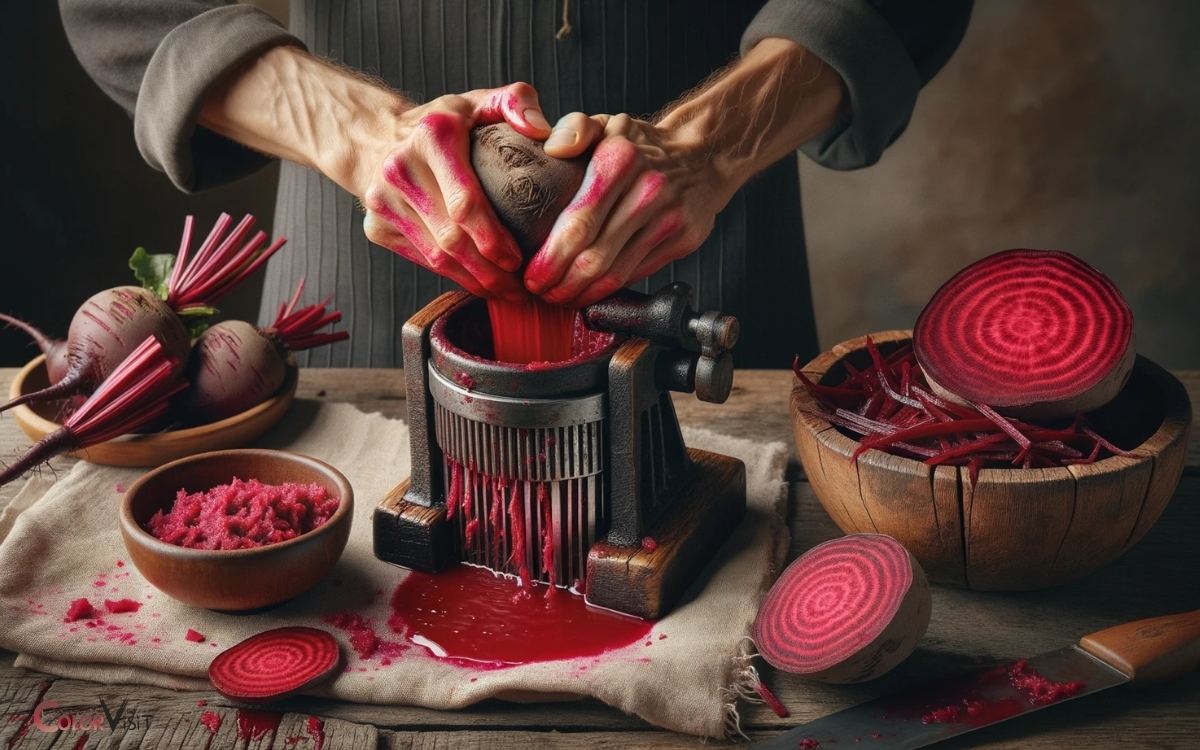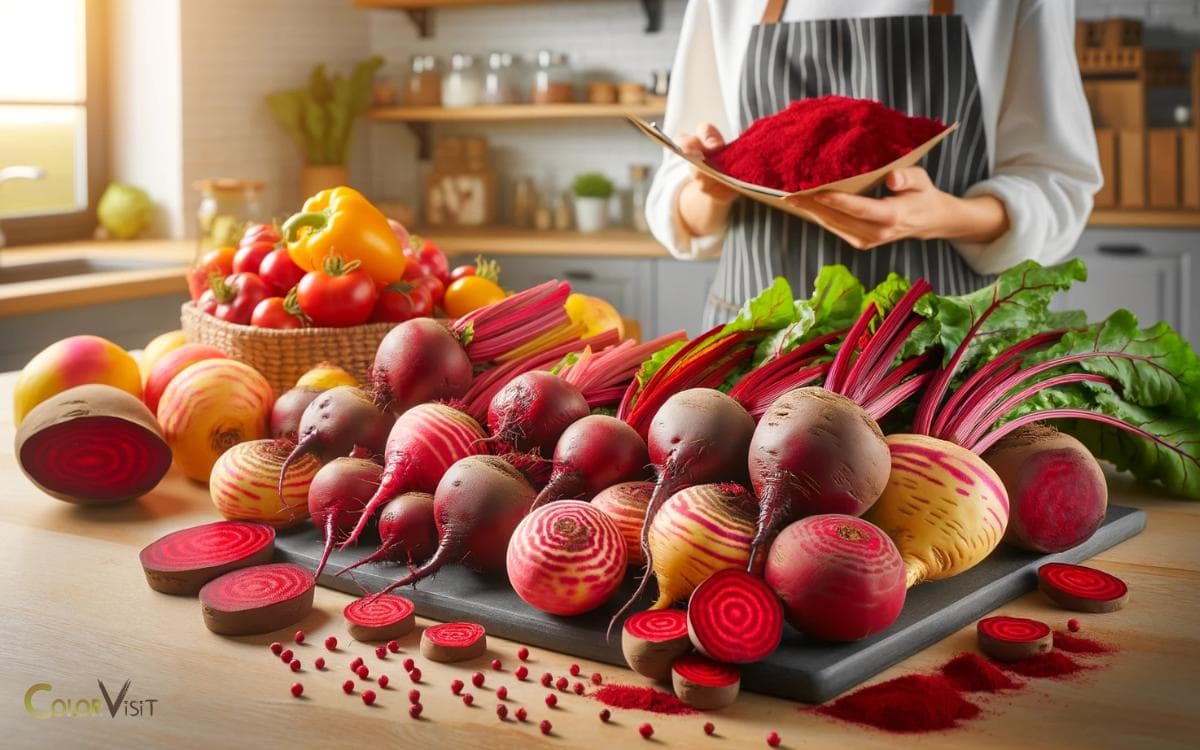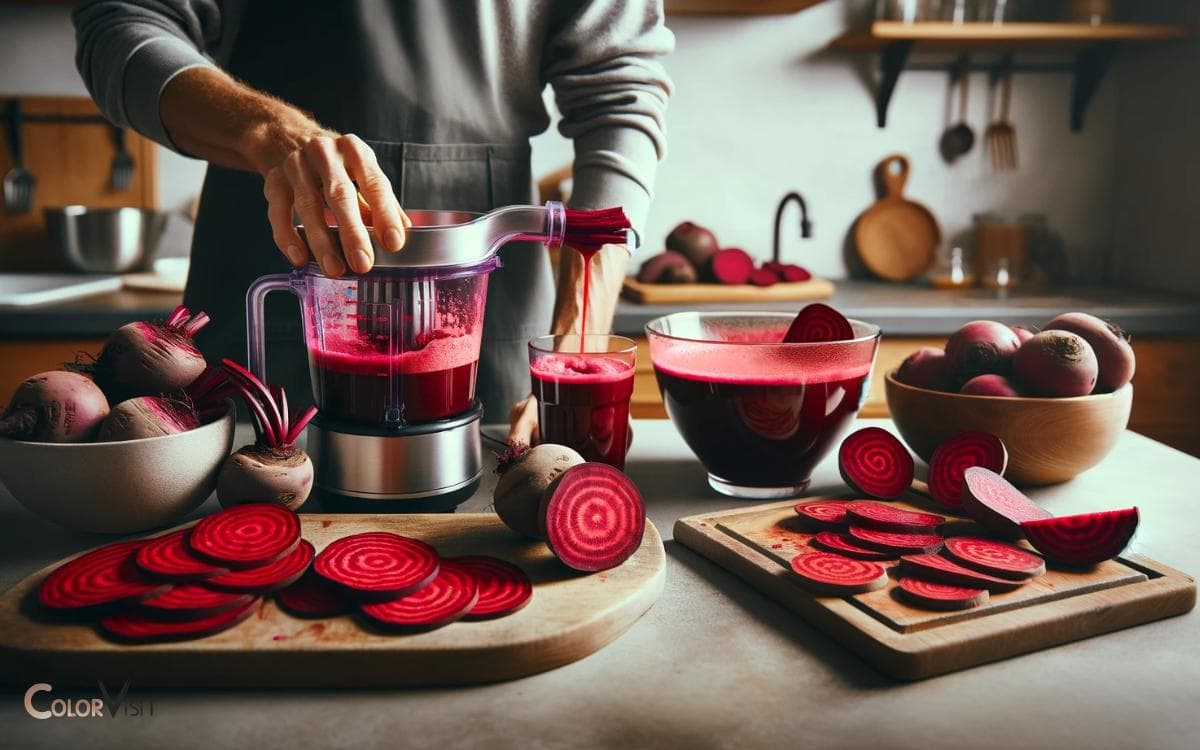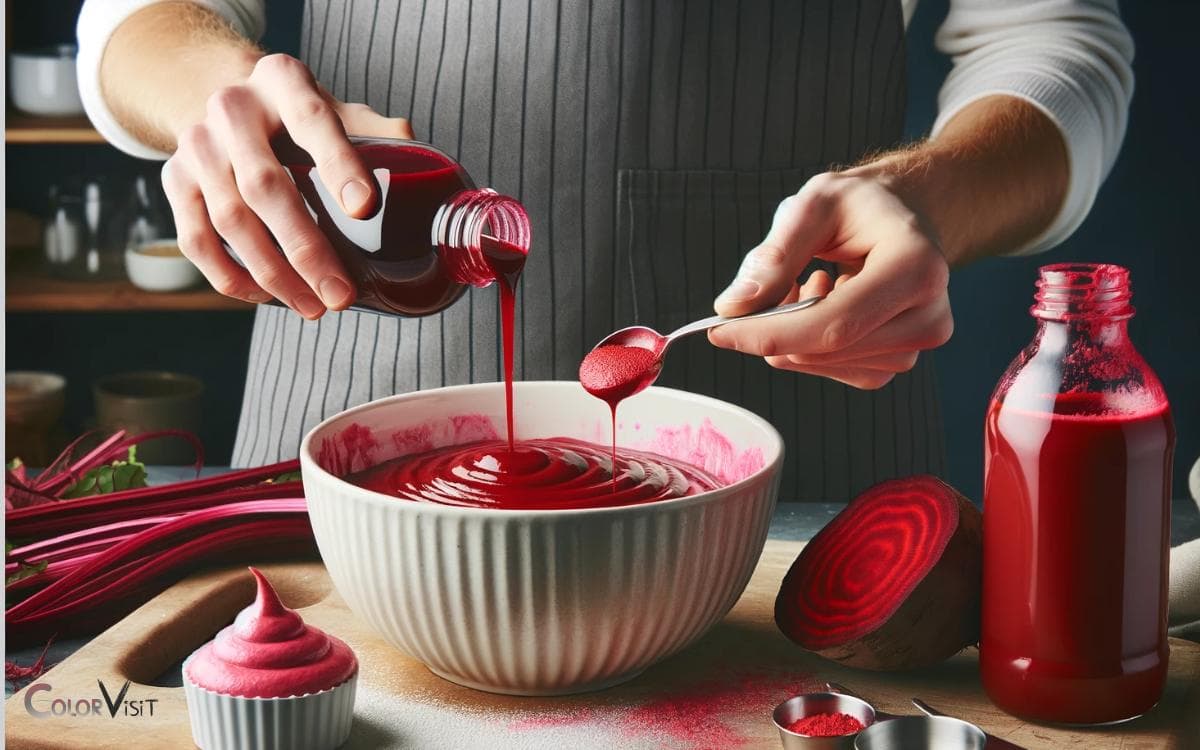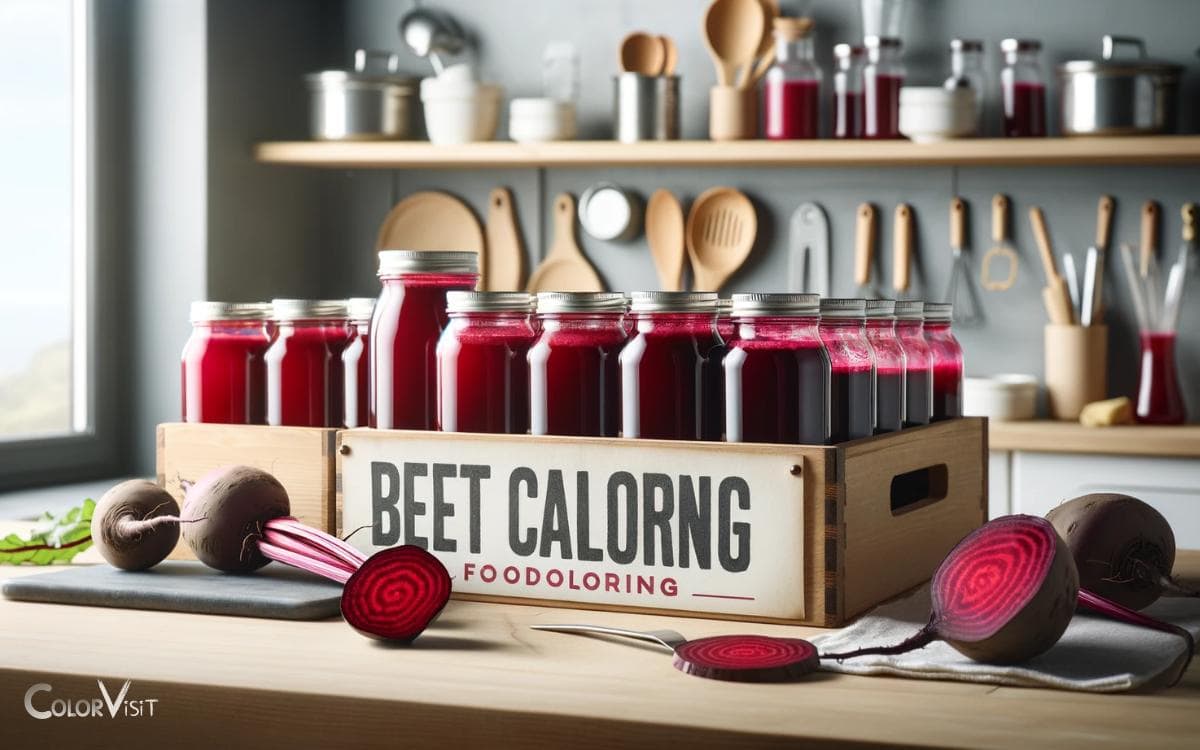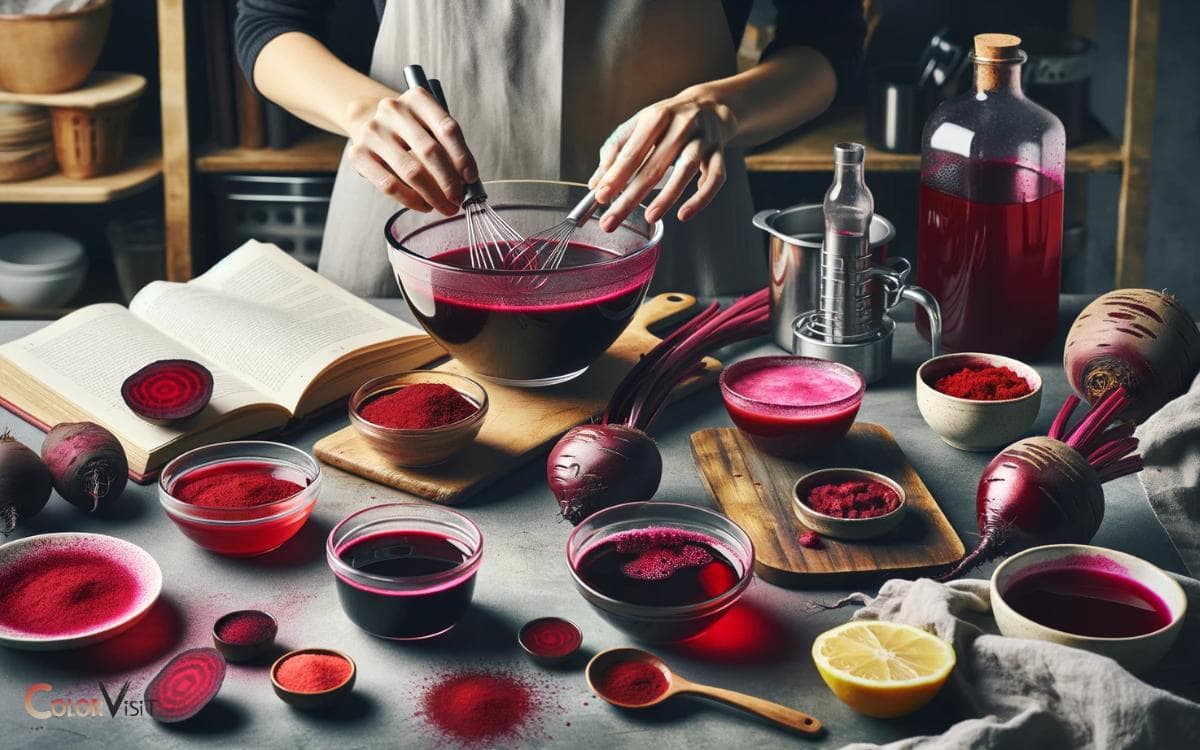How to Make Red Food Coloring from Beets? 4 Steps!
Creating natural red food coloring from beets is a simple and healthy alternative to using artificial dyes.
This natural coloring can then be incorporated into various recipes to enhance their visual appeal without the use of synthetic colorants.
The process involves:
Embrace the power of nature in your kitchen by transforming ordinary beets into a stunning red food coloring, perfect for elevating the visual flair of your homemade treats and dishes.
Key Takeaway
Step 1: Selecting the Right Beets
To make red food coloring from beets, select three medium-sized, firm beets with deep, vibrant red flesh and minimal blemishes.
- The quality of the beets is crucial to obtaining a rich, vibrant red color.
- Look for beets with a deep, intense hue, as this will directly impact the color intensity of the food coloring.
- Firmness is also important, as softer beets may indicate age or a lack of freshness, which can affect the vibrancy of the color.
- By choosing beets with these qualities, you ensure a potent and visually appealing red food coloring.
- Once the ideal beets are selected, the next step involves preparing and extracting beet juice to create the desired food coloring.
Step 2: Preparing and Extracting Beet Juice
With the carefully selected beets in hand, it is essential to meticulously prepare and extract the beet juice to achieve the desired red food coloring.
- Begin by thoroughly washing the beets to remove any dirt or debris.
- Next, trim off the stems and roots, and peel the outer skin to ensure a clean extraction. Once cleaned, chop the beets into small, uniform pieces to facilitate the juicing process.
- Utilize a juicer to extract the vibrant red liquid from the beets, ensuring maximum yield.
- Alternatively, a blender can be used to puree the beets, followed by straining the mixture through a fine mesh sieve or cheesecloth to separate the juice from the pulp.
With the beet juice successfully extracted, it is now ready to be used as a natural red food coloring in various culinary applications.
Step 3: Using Beet Juice as Food Coloring
After extracting the vibrant red liquid from the beets, a precise measurement of beet juice can be used as a natural red food coloring in a wide array of culinary applications.
- This natural alternative to artificial food coloring offers a unique and healthy way to add a pop of red to various dishes and baked goods.
- When using beet juice as a food coloring, it’s essential to start with a small amount and gradually increase to achieve the desired shade of red, as the color can intensify during cooking or baking.
- Beet juice works well in coloring frosting, icing, cake batter, cookie dough, and even savory dishes like pasta and sauces.
Experimenting with beet juice as a food coloring can lead to innovative and visually stunning culinary creations.
Step 4: Storing Homemade Beet Food Coloring
Homemade beet food coloring should be stored in a tightly sealed glass container to maintain its vibrant red hue and prevent oxidation.
To ensure the longevity and quality of your homemade beet food coloring, consider the following storage tips:
- Keep it in a Cool, Dark Place: Store the beet food coloring in a cool, dark area, such as a pantry or cupboard, away from direct sunlight and heat, to preserve its color and potency.
- Use an Airtight Seal: Invest in a high-quality glass container with an airtight seal to prevent air from entering and causing the beet food coloring to degrade.
- Refrigerate for Extended Shelf Life: For prolonged use, refrigerate the beet food coloring. The cold temperature will help maintain its freshness and vibrancy.
Tips and Tricks for Achieving Desired Shades
To consistently achieve the desired shades using homemade beet food coloring, it is essential to carefully monitor the dye concentration during the dyeing process.
Adjusting the concentration of the beet dye allows for a range of colors to be achieved, from light pink to deep red.
Additionally, the pH level of the dye solution can significantly impact the resulting shade.
Experiment with adding small amounts of lemon juice or vinegar to the dye bath to shift the color towards a more vibrant red.
The table below summarizes the key factors influencing the shades achievable with homemade beet food coloring:
| Factor | Impact on Shade |
|---|---|
| Dye Concentration | Range of colors |
| pH Level | Vibrancy of color |
| Dyeing Duration | Depth of the shade |
Conclusion
Making red food coloring from beets can be a natural and effective way to enhance the color of your culinary creations.
By selecting the right beets, preparing and extracting the beet juice, and using it as food coloring, you can achieve vibrant and natural shades.
Storing the homemade beet food coloring properly will ensure its longevity.
